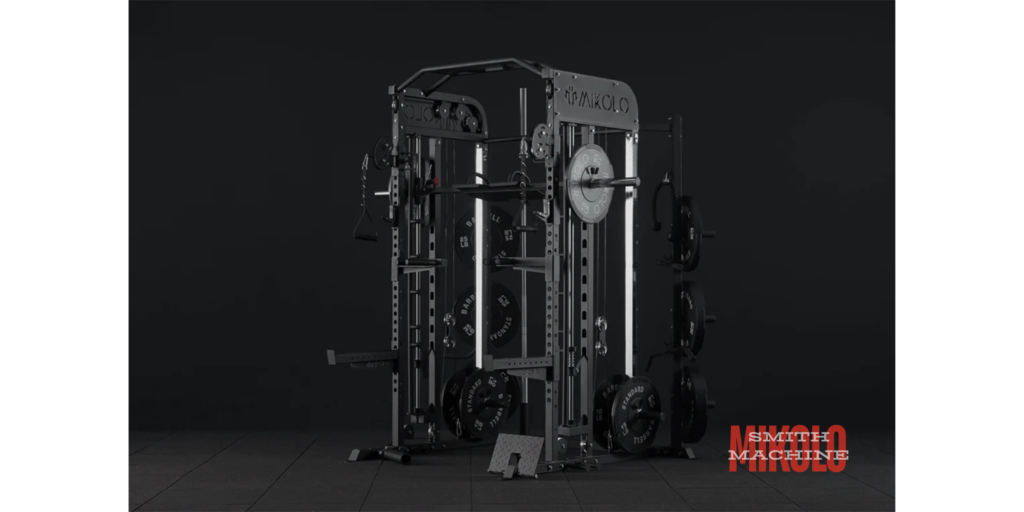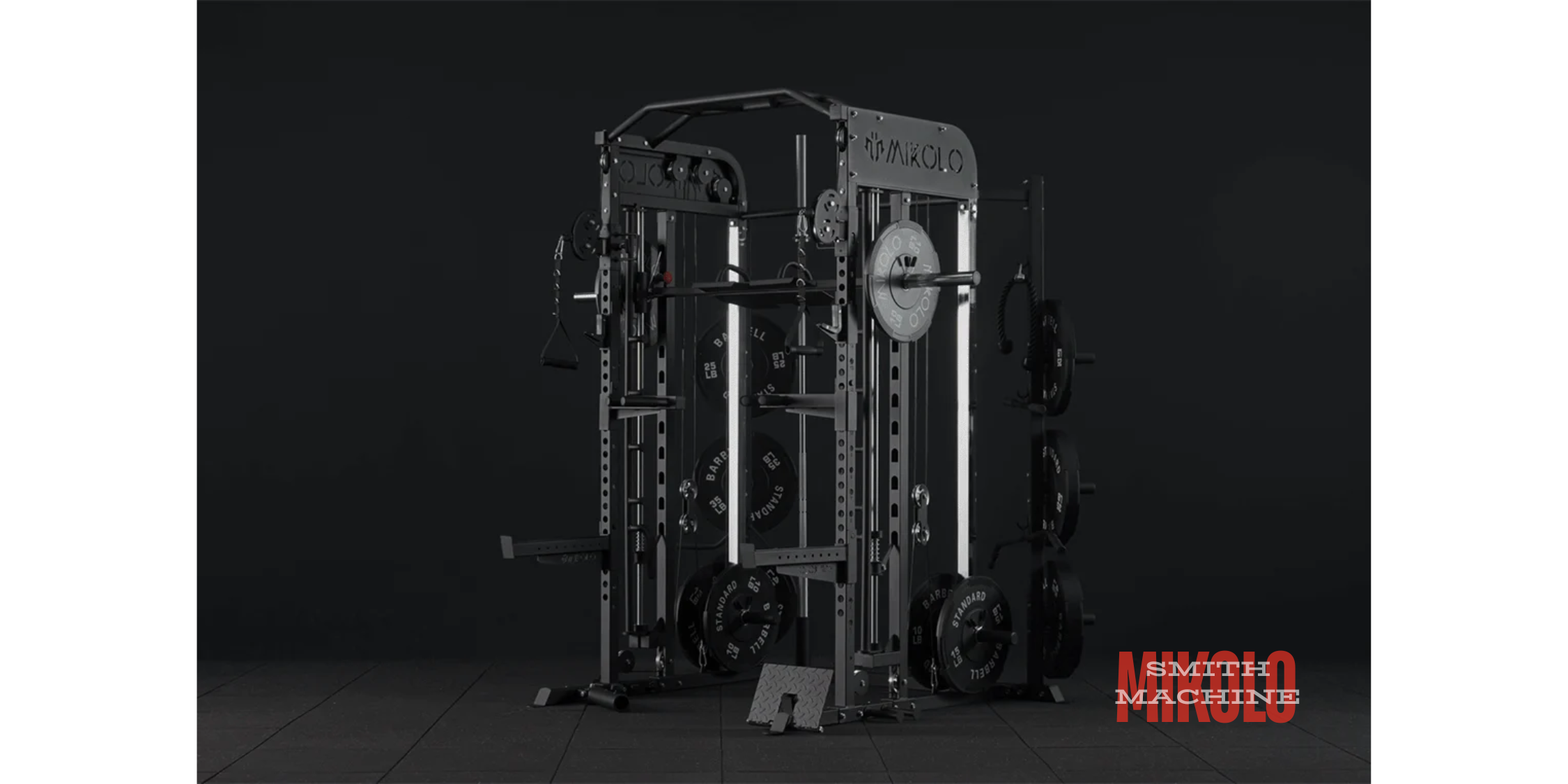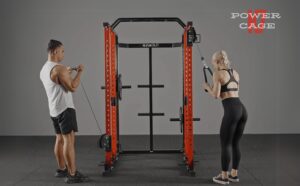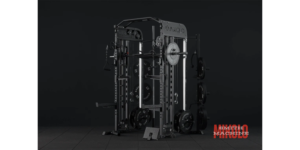The Smith machine has been a staple in gyms for decades, providing a unique balance of stability and versatility for weightlifting enthusiasts. Over the years, this iconic piece of fitness equipment has undergone significant transformations, adapting to the evolving needs of users and advances in technology. Let’s explore the journey of the Smith machine, from its inception to the modern designs of today. You can also check for Best Smith Machine of 2025 here.
This article contains affiliate links. As an Amazon Associate, we earn from qualifying purchases at no additional cost to you.
The Birth of the Smith Machine
The concept of the Smith machine dates back to the 1950s when fitness pioneer Jack LaLanne collaborated with his friend Rudy Smith to create a guided weightlifting system. Their goal was to design a machine that allowed lifters to perform exercises safely without the need for a spotter. The original Smith machine featured a barbell fixed within a set of vertical rails, enabling users to perform controlled lifts while maintaining proper form.
The invention was revolutionary at the time, bridging the gap between free weights and machines. It catered to both novice lifters and experienced athletes, offering a secure environment for experimenting with heavier loads or new exercises.
Early Adoption and Popularity
In the 1960s and 70s, the Smith machine began appearing in commercial gyms and quickly gained popularity. Its ability to provide a stable lifting environment made it particularly appealing to beginners and those recovering from injuries. During this period, the design remained relatively simple, with basic safety mechanisms and limited customization options.
Many gym-goers appreciated the simplicity of the Smith machine, as it required minimal setup and eliminated much of the intimidation associated with free weights. The fixed movement path also helped users focus on targeting specific muscle groups without worrying about balance.
Innovations in the 1980s and 90s
As the fitness industry grew, so did the demand for more versatile and user-friendly equipment. The 1980s and 90s saw several key innovations in Smith machine design:
- Adjustable Safety Stops: Manufacturers introduced adjustable safety stops, allowing users to set limits on the barbell’s range of motion, enhancing safety.
- Counterbalanced Barbells: Some machines featured counterbalanced barbells to reduce the starting weight, making them more accessible to a wider range of users.
- Dual Functionality: Many Smith machines were integrated with cable systems, enabling users to perform a broader array of exercises.
These advancements marked a significant turning point, as Smith machines became more appealing to both gym owners and fitness enthusiasts. By combining safety with versatility, they solidified their place in commercial gyms worldwide.
The Rise of Modern Smith Machines

In the 2000s and beyond, Smith machines underwent a significant transformation, blending advanced engineering with ergonomic design. Today’s machines are characterized by their durability, adaptability, and user-centric features:
- Angled Rails: Unlike traditional vertical rails, many modern Smith machines feature slightly angled rails to mimic the natural movement of free weights, providing a more dynamic workout experience.
- Multi-Functional Stations: Modern designs often combine the Smith machine with pull-up bars, dip stations, and resistance band anchors, making them a complete home gym solution.
- Innovative Safety Features: Enhanced safety mechanisms, such as quick-release hooks and improved safety stops, ensure maximum protection during heavy lifts.
- Digital Integration: Some high-end models include digital tracking systems to monitor performance, set goals, and provide real-time feedback.
Additionally, modern Smith machines are built with aesthetics in mind. Sleek designs and compact footprints make them suitable for home gyms, catering to fitness enthusiasts who prefer exercising in the comfort of their own space.
Benefits of Using Smith Machines

The evolution of Smith machines has reinforced their core benefits while adding new dimensions to their usability:
- Stability: The guided bar path minimizes the risk of losing balance, making it ideal for beginners or those recovering from injuries.
- Targeted Training: Users can isolate specific muscle groups more effectively than with free weights.
- Safety: Adjustable stops and quick-release mechanisms provide a secure environment for heavy lifting.
- Versatility: Modern designs enable a wide range of exercises, from squats and bench presses to rows and lunges.
These advantages have kept the Smith machine relevant, even as other fitness trends and equipment have emerged over the years.
Future Trends in Smith Machine Design
As fitness technology continues to advance, we can expect further innovations in Smith machine design. Potential trends include:
- Smart Connectivity: Integration with fitness apps and wearable devices to track progress and customize workouts.
- Space-Saving Designs: Compact, foldable Smith machines tailored for home gyms with limited space.
- Customizable Resistance Systems: Machines that allow users to adjust resistance through magnetic or hydraulic systems for more precise training.
- Interactive Features: Virtual coaching systems and augmented reality components could guide users through workouts in real-time.
The incorporation of cutting-edge technology will likely expand the Smith machine’s appeal, making it even more accessible to tech-savvy fitness enthusiasts.
Conclusion
From its humble beginnings as a simple guided weightlifting system, the Smith machine has evolved into a sophisticated piece of fitness equipment, catering to a diverse range of users. Its journey reflects the broader evolution of the fitness industry, driven by innovation and a commitment to enhancing the workout experience. Whether you’re a beginner or a seasoned athlete, the Smith machine’s modern designs ensure it remains a valuable tool for strength training in any setting.
As we look to the future, the Smith machine’s adaptability and innovative potential will continue to secure its place as a cornerstone of strength training. Its rich history and ongoing evolution make it a testament to the enduring importance of safety, functionality, and progress in fitness equipment design.















